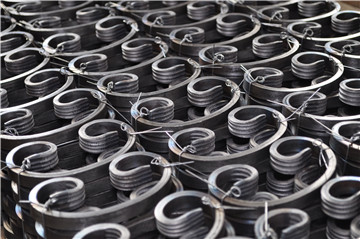Is ornamental iron the same as wrought iron?
Views: 543 Update date: Jul 18,2023
Have you ever wondered about the distinctive beauty of intricate ironwork that adorns gates, fences, and balconies? You might have come across the terms "ornamental iron" and "wrought iron" in your quest for architectural elegance. But are these two expressions truly synonymous, or do they hold distinct characteristics?
Iron has long captured the imagination of artisans and engineers alike. Its strength, malleability, and versatility have made it a preferred material for creating timeless masterpieces. From ancient civilizations to modern marvels, iron has left an indelible mark on our architectural heritage.
Key Points about Ornamental Iron:
Ornamental ironwork is a decorative manifestation of artistry and craftsmanship. It is typically created using mild steel, which offers both strength and flexibility to fashion stunning designs that adorn our surroundings.
Artistic Beauty: Ornamental iron is a marriage of art and function, providing aesthetic appeal while serving practical purposes.
Materials Used: Mild steel is commonly employed to create ornamental ironwork due to its workability and cost-effectiveness.
Versatile Applications: From gates and fences to railings and furniture, ornamental iron finds its place in a wide range of architectural elements.
Customization: The artistic nature of ornamental iron allows for endless customization options, enabling homeowners and designers to tailor designs to their specific preferences.

Key Points about Wrought Iron:
Wrought ironwork boasts a history that dates back centuries, showcasing the meticulous artistry of blacksmiths who shaped metal with fire and hammer. Unlike ornamental iron, wrought iron possesses distinct characteristics that set it apart as a material of unparalleled beauty.
Forged by Fire: Wrought iron is shaped through a labor-intensive process of heating and hammering, imbuing it with its signature strength and unique texture.
Unmatched Durability: The inherent toughness of wrought iron allows it to withstand the test of time, making it a preferred choice for historical restoration projects.
Classic Elegance: The smooth, matte finish of wrought iron exudes a sense of timeless elegance that lends an air of sophistication to any architectural setting.
Authenticity and Rarity: True wrought iron is a scarce commodity today, as the traditional production methods have largely been replaced by more efficient manufacturing processes.
Distinctions
While ornamental iron and wrought iron both embrace the art of metalwork, they exhibit fundamental differences that discerning eyes can appreciate. Ornamental iron primarily focuses on the aesthetic aspect, offering intricate designs and customizable options, while wrought iron encapsulates the essence of heritage and craftsmanship with its enduring strength and refined elegance.
Prev News: What is ornamental iron made of?
Next News: What is the best material for a spear head?
